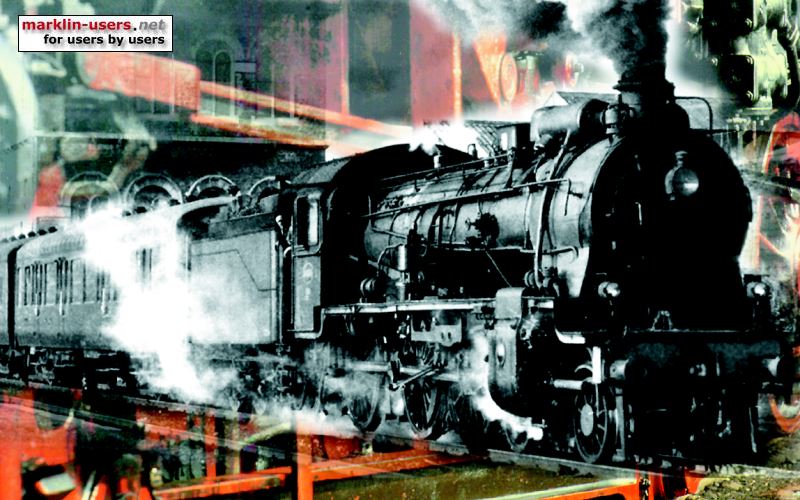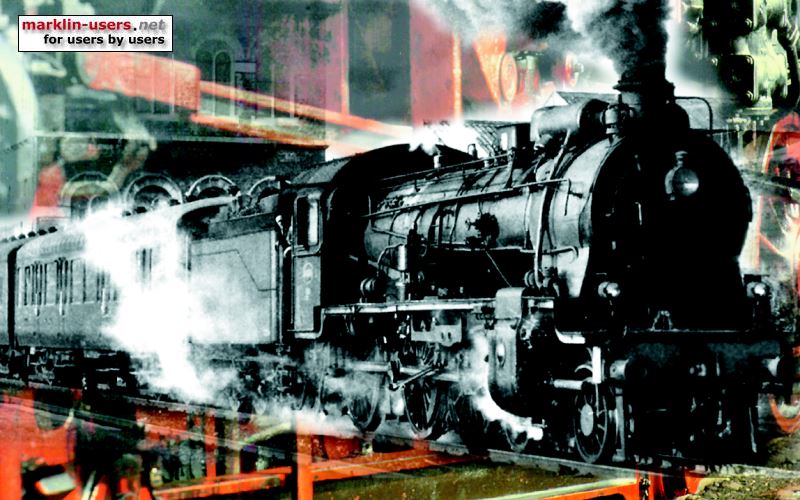 Joined: 05/07/2020(UTC) Posts: 326 Location: Mississippi, Vancleave
|
Does Russia still use the 5" track gauge?
|
|
|
|
|
|
Joined: 16/02/2004(UTC)
Posts: 15,448
Location: DE-NW
|
|
Regards Tom --- "In all of the gauges, we particularly emphasize a high level of quality, the best possible fidelity to the prototype, and absolute precision. You will see that in all of our products." (from Märklin New Items Brochure 2015, page 1) ROFLBTCUTS  |
|
|
|
|
|
 Joined: 10/02/2021(UTC) Posts: 3,930 Location: Michigan, Troy
|
TT is popular there. Piko and Tillig sold trains there since the 1960s at least.
|
|
|
|
|
|
Joined: 16/02/2004(UTC)
Posts: 15,448
Location: DE-NW
|
Originally Posted by: marklinist5999  TT is popular there. Piko and Tillig sold trains there since the 1960s at least. This is the "Prototype" section of the forum. |
Regards Tom --- "In all of the gauges, we particularly emphasize a high level of quality, the best possible fidelity to the prototype, and absolute precision. You will see that in all of our products." (from Märklin New Items Brochure 2015, page 1) ROFLBTCUTS  |
 1 user liked this useful post by H0
|
|
|
|
 Joined: 31/12/2010(UTC) Posts: 3,999 Location: Paremata, Wellington
|
Originally Posted by: Mr. Ron  Does Russia still use the 5" track gauge? You surely mean 5' (foot) rather than 5" (inch)? 5" is a miniature railway gauge as found with model engineers, eide-on trains etc |
Cookee Wellington  |
|
|
|
|
|
 Joined: 25/01/2020(UTC) Posts: 207 Location: istanbul
|
Prototypically speaking ... Russia have different track gauges.
This stems from German invasion/attack; they wanted to avoid German tarins running their tracks so they laid tracks differently. Many East European countries still have narrow and wide gaguge railroads.
C.
|
 2 users liked this useful post by thing fish
|
|
|
|
 Joined: 23/07/2014(UTC) Posts: 8,490 Location: ENGLAND, Didcot
|
I remember in 1997, when my wife and I moved from NZ to the UK, we took the train from beijing across Russia. We had to have bogies changed at the China/Russia border, and again at the Russia/Poland border.
Quite an exercise, with the coach lifted up on stirrups after the bogie mounting was undone, and then all the bogies pulled out from under the coaches and the replacement ones pulled in by a long rope, the coach lowered onto the new bogies and then the bogie mounting secured.
|
 6 users liked this useful post by kiwiAlan
|
|
|
|
 Joined: 26/07/2021(UTC) Posts: 635 Location: Sydney
|
Originally Posted by: kiwiAlan  We had to have bogies changed at the China/Russia border, and again at the Russia/Poland border.
At least that is at a Country's border. Australia uses just about every conceivable gauge in different states. Up to 1600mm in South Australia. Different fire fighting connections in different states. Slightly different voltages around the country up until not that long ago. Road rules.... and I won't get onto the State boundary Covid rules. Except for one (you couldn't write this stuff) a block of Units built on the border in NSW but the residents leaving their front door were in Queensland. They were not allowed to leave their property. It's beside the point they they had no other access into NSW unless they climbed over other propertys' fences.
|
 1 user liked this useful post by Toosmall
|
|
|
|
 Joined: 29/01/2012(UTC) Posts: 1,422 Location: Montreal, Canada
|
Remembered seeing a few videos of the bogies being changed a while ago. What amazes me in this video is that they still check the bogies "soundness" after changing by banging on the parts with a hammer. I wonder what the difference is the sound or feeling of the hammer is when its not right. More detailed explanation of the process here: https://realrussia.co.uk...at-happens-at-the-borderThe Wikipedia entry shows the numerous points of bogie exchange all through Eastern Europe and other parts of world, including two exchanges in Spain and France. https://en.wikipedia.org/wiki/Bogie_exchange |
DB DR FS NS SNCF c. 1950-65, fan of station architecture esp. from 1920-70.
In single point perspective, where do track lines meet?
|
 2 users liked this useful post by Mark5
|
|
|
|
 Joined: 23/07/2014(UTC) Posts: 8,490 Location: ENGLAND, Didcot
|
Originally Posted by: Mark5  Remembered seeing a few videos of the bogies being changed a while ago.
What amazes me in this video is that they still check the bogies "soundness" after changing by banging on the parts with a hammer. I wonder what the difference is the sound or feeling of the hammer is when its not right.
They did the check with a hammer every stop we made. It checks for cracked tyres on the wheels. A good one will have a nice ring when tapped, a cracked one doesn't ring.
|
|
|
|
|
|
 Joined: 29/01/2012(UTC) Posts: 1,422 Location: Montreal, Canada
|
Must have been a fabulous experience Alan! Did you go across Siberia in one go, or make longer stops anywhere? I imagine one would have to have an attuned ear for the correct ring tone, so to speak. Wondering how long such an apprenticeship would take, and what other training goes into that. An overlooked crack could be fatal. Originally Posted by: kiwiAlan 
They did the check with a hammer every stop we made. It checks for cracked tyres on the wheels. A good one will have a nice ring when tapped, a cracked one doesn't ring.
|
DB DR FS NS SNCF c. 1950-65, fan of station architecture esp. from 1920-70.
In single point perspective, where do track lines meet?
|
|
|
|
|
|
 Joined: 26/07/2021(UTC) Posts: 635 Location: Sydney
|
Originally Posted by: cookee_nz  Originally Posted by: Mr. Ron  Does Russia still use the 5" track gauge? You surely mean 5' (foot) rather than 5" (inch)? 5" is a miniature railway gauge as found with model engineers, eide-on trains etc Big difference between 5' and 5" http://www.hme.org.au/photos.phpA steam engine weighs up to about 300kg, not into the tens of tonnes.
|
|
|
|
|
|
Forum Jump
You cannot post new topics in this forum.
You cannot reply to topics in this forum.
You cannot delete your posts in this forum.
You cannot edit your posts in this forum.
You cannot create polls in this forum.
You cannot vote in polls in this forum.